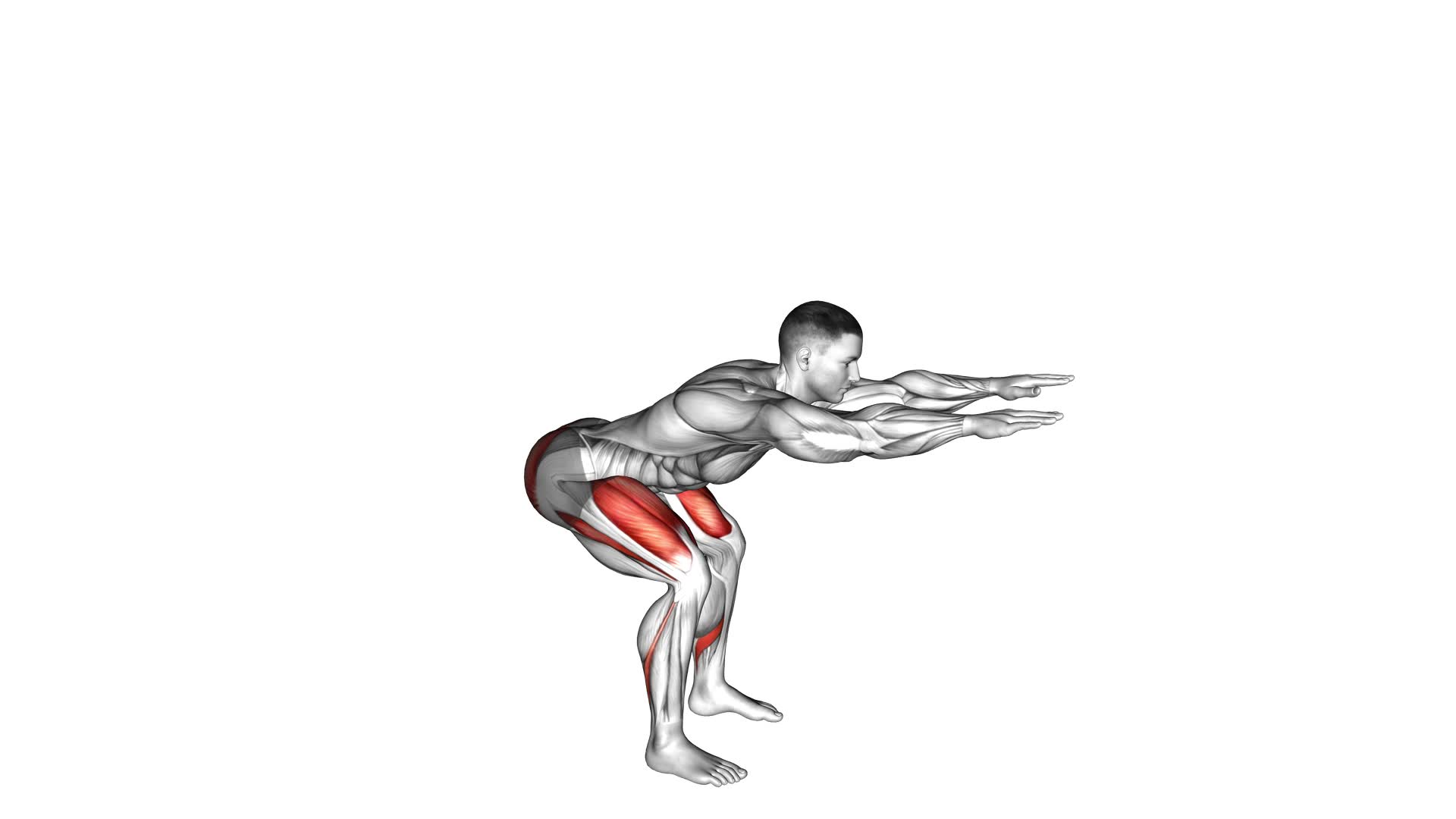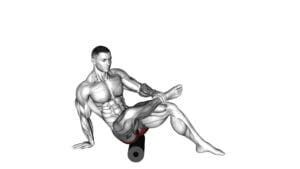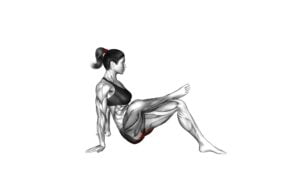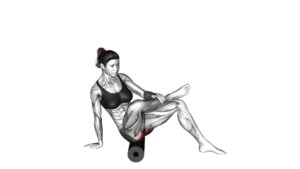Hip Squat – Video Exercise Guide & Tips

Looking to tone and strengthen your hips? Look no further than the hip squat!
Watch This Exercise Video
This video exercise guide and tips will show you the proper form and technique to maximize your results.
Say goodbye to common mistakes and hello to progressions and variations that will challenge your muscles in new ways.
With these expert tips, you'll be on your way to a safe and effective workout that targets your hips like never before.
Let's get squatting!
Key Takeaways
- The hip squat is a beneficial exercise for strengthening glutes and thighs, engaging multiple muscle groups simultaneously, improving hip mobility, and targeting the gluteus maximus for stronger glutes.
- Proper form and technique for the hip squat include positioning feet shoulder-width apart, engaging core muscles, lowering the body by bending knees and pushing hips back, keeping the chest lifted and back straight, and focusing on using glutes and hamstrings to power the movement.
- Common mistakes to avoid during the hip squat include allowing the knees to collapse inward, not using enough resistance or weight, rushing through the movement, not maintaining stability and proper alignment, and neglecting to breathe throughout the exercise.
- Progressions and variations of the hip squat include incorporating modified squat variations like goblet squats or sumo squats, advancing squat progressions by adding weight or performing single-leg squats, including explosive movements like jump squats, trying the sumo squat to target inner thigh muscles, and challenging balance and stability with the pistol squat.
Benefits of the Hip Squat
One of the main benefits of the hip squat is its ability to strengthen your glutes and thighs. By incorporating the hip squat into your workout routine, you can target these muscle groups effectively and efficiently. The hip squat is a compound exercise that engages multiple muscle groups simultaneously, making it an excellent choice for overall lower body strength and development.
One of the key benefits of the hip squat is improved hip mobility. This exercise requires a wide range of motion in the hips, allowing you to increase flexibility and mobility in this area. As you perform the hip squat, you'll be working on your hip flexors, which play a crucial role in hip mobility. By regularly incorporating this exercise into your routine, you can improve your overall hip flexibility and reduce the risk of injuries.
Additionally, the hip squat is highly effective in strengthening your glutes. The squatting motion engages the gluteal muscles, particularly the gluteus maximus, which is the largest muscle in your buttocks. Strengthening your glutes not only improves the appearance of your rear end but also enhances overall lower body strength and stability. Strong glutes are vital for activities such as running, jumping, and lifting heavy objects.
Proper Form and Technique
To perform the hip squat with proper form and technique, follow these steps:
- Position your feet shoulder-width apart and engage your core muscles.
- Lower your body down by bending your knees and pushing your hips back, as if you were sitting back into a chair. Keep your chest lifted and your back straight.
- Make sure your knees stay in line with your toes and avoid letting them collapse inward.
- Pause for a moment at the bottom of the squat, then push through your heels to return to the starting position.
- Focus on using your glutes and hamstrings to power the movement, rather than relying solely on your quadriceps.
- Remember to breathe throughout the exercise, inhaling as you lower down and exhaling as you push back up.
- Start with a weight that challenges you but allows you to maintain proper form.
- Gradually increase the weight as you become more comfortable and confident.
Common Mistakes to Avoid
To avoid common mistakes, make sure that you don't let your knees collapse inward while performing the hip squat. This is a common mistake that can lead to injury if not corrected. When your knees cave in, it puts unnecessary stress on the joints and can cause pain and discomfort. To prevent this, focus on keeping your knees in line with your toes throughout the movement. Engage your glutes and core muscles to maintain stability and proper alignment.
Another common mistake isn't using enough resistance or weight during the exercise. This can limit the effectiveness of the hip squat and hinder your progress. It's important to challenge yourself by using an appropriate amount of weight that allows you to perform the exercise with proper form.
Lastly, rushing through the movement is a common mistake to avoid. Take your time and perform each rep with control and precision. This won't only maximize the benefits of the exercise but also reduce the risk of injury.
Progressions and Variations
Now let's talk about the different variations and progressions you can incorporate into your hip squat routine.
Modified squat variations, such as goblet squats or sumo squats, can help target specific muscle groups and add variety to your workouts.
Advancing your squat progressions by adding weight, performing single-leg squats, or incorporating explosive movements like jump squats can help challenge your muscles and continue to improve your strength and stability.
Modified Squat Variations
Begin by incorporating modified squat variations into your workout routine to progress and challenge yourself. Squat modifications can be a great way to target different muscle groups while still reaping the benefits of a squat exercise.
One option is the sumo squat, where your feet are wider apart and toes are turned out. This variation targets the inner thigh muscles more effectively.
Another alternative is the pistol squat, which is a one-legged squat that focuses on balance and stability.
Advancing Squat Progressions
Incorporate advancing squat progressions to further challenge and improve your squat exercise. Once you have mastered the basic squat, it's time to take it up a notch with advanced squat techniques.
One such technique is the hip squat, which offers a range of benefits for your lower body strength and stability. By shifting the focus to your hip joints, the hip squat targets your glutes, hamstrings, and quadriceps more intensely. This variation also helps improve core stability and balance.
To perform the hip squat, start with your feet wider than shoulder-width apart and toes turned out slightly. As you lower into the squat, focus on pushing your hips back and down, keeping your chest up and knees aligned with your toes.
Transitioning into the subsequent section about 'tips for a safe and effective workout', it's important to remember that proper form and technique are crucial in any exercise routine.
Tips for a Safe and Effective Workout
To have a safe and effective workout, it's crucial to maintain proper form while performing hip squats. This won't only maximize the benefits of the exercise but also reduce the risk of workout-related injuries.
Proper Form Importance
How can you ensure a safe and effective workout without compromising proper form? Proper form is crucial for maximizing the benefits of any exercise and reducing the risk of injury. Here are three important reasons why maintaining proper form is essential:
- Importance of alignment: Proper form ensures that your body is in the correct position to target the right muscles and joints. By maintaining proper alignment, you can effectively engage the intended muscle groups and avoid unnecessary strain on other parts of your body.
- Prevention of injuries: When you perform exercises with proper form, you minimize the risk of injuries. Maintaining proper alignment and using the correct technique helps to distribute the load evenly and reduces the chance of overloading specific muscle groups or joints.
- Maximizing results: Proper form allows you to perform exercises efficiently, ensuring that you're targeting the specific muscle groups you want to work. By using the correct form, you can optimize your workout and achieve your desired results faster and more effectively.
Avoiding Workout-Related Injuries
Prioritizing proper form to minimize the risk of workout-related injuries should always be a top priority during your workout routine.
One important step in avoiding injuries is to warm up properly before starting any intense exercises. Warm up exercises help to prepare your muscles and joints for the workout, reducing the risk of strains or sprains. Incorporating dynamic stretches, such as arm circles or leg swings, can help increase blood flow and improve flexibility.
Another key aspect of injury prevention is to listen to your body. Pushing through pain or fatigue can lead to injuries, so it's important to know your limits and take breaks when needed.
Sample Hip Squat Workout Routine
Maximize your hip squat workout routine with this effective and efficient plan. The hip squat is a powerful exercise that targets your glutes, quads, and hamstrings while also engaging your core. By incorporating the following three elements into your hip squat routine, you can enhance your performance and reap the benefits of this exercise:
- Hip squat modifications: To add variety and challenge to your routine, try different hip squat variations. For example, you can perform sumo squats by widening your stance and pointing your toes outward. This targets your inner thighs and glutes more intensely. Another modification is the Bulgarian split squat, where you elevate one foot on a bench or step. This variation places more emphasis on your quads and glutes.
- Tempo training: Varying the speed at which you perform your hip squats can increase the intensity and effectiveness of the exercise. You can try slowing down the eccentric phase (lowering) of the squat to engage your muscles for a longer duration. Alternatively, you can incorporate explosive jumps into your hip squats to enhance power and explosiveness.
- Progressive overload: To continue making gains and challenging your muscles, gradually increase the resistance or repetitions in your hip squat routine. This can be done by using weights such as dumbbells or a barbell, or by adding resistance bands. Aim to progressively overload your muscles to stimulate growth and strength development.
Frequently Asked Questions
How Many Calories Can You Burn by Doing the Hip Squat Exercise?
When it comes to burning calories, the hip squat exercise can be a game-changer. By incorporating hip squats into your workout routine, you can reap numerous benefits.
Not only does this exercise target your glutes, quads, and hamstrings, but it also helps improve your overall lower body strength and stability.
To maximize calorie burn, make sure to perform hip squats with proper form. Engaging your core and maintaining a controlled tempo will help you achieve the best results.
Can the Hip Squat Exercise Help in Reducing Cellulite?
Yes, the hip squat exercise can help in reducing cellulite.
By engaging the muscles in your hips and thighs, hip squats can tone and strengthen those areas, which can contribute to reducing the appearance of cellulite.
Additionally, hip squats can improve flexibility in the hip joints, allowing for better range of motion and reducing the risk of injury.
Incorporating hip squats into your exercise routine can be a beneficial step towards achieving smoother, more toned skin.
What Are the Potential Risks or Injuries Associated With Performing the Hip Squat Exercise?
When it comes to the hip squat exercise, it's important to be aware of potential risks and injuries. Proper precautions, technique, and form are crucial to avoid any harm.
This exercise primarily targets the hip muscles, glutes, and quads, enhancing lower body strength. However, if done incorrectly or with excessive weight, it can strain the back, knees, or hips.
Can the Hip Squat Exercise Improve Your Posture?
The hip squat exercise has the potential to improve your posture by strengthening your core muscles and improving balance. By engaging your core and maintaining proper form throughout the exercise, you can develop better alignment and stability in your spine. This can help prevent slouching and promote a more upright posture.
Additionally, the hip squat targets the muscles in your lower body, which can also contribute to overall postural improvements.
How Often Should the Hip Squat Exercise Be Done to See Results?
To see results from the hip squat exercise, it's important to maintain a consistent frequency. The hip squat frequency depends on your fitness level and goals.
Generally, aim to do the hip squat exercise at least 2-3 times a week. This will allow your muscles to recover and adapt, leading to improved strength and stability in your hips and lower body.
Remember to always listen to your body and adjust the frequency as needed.
Conclusion
In conclusion, the hip squat is a highly effective exercise that targets the muscles in your hips, glutes, and thighs.
By maintaining proper form and technique, you can maximize the benefits of this exercise while avoiding common mistakes.
Progressions and variations can be incorporated to challenge yourself and keep your workouts interesting.
Remember to always prioritize safety and listen to your body during your hip squat routine.
With consistency and dedication, you can achieve strong and toned lower body muscles.

Author
Years ago, the spark of my life’s passion ignited in my mind the moment I stepped into the local gym for the first time. The inaugural bead of perspiration, the initial endeavor, the very first surge of endorphins, and a sense of pride that washed over me post-workout marked the beginning of my deep-seated interest in strength sports, fitness, and sports nutrition. This very curiosity blossomed rapidly into a profound fascination, propelling me to earn a Master’s degree in Physical Education from the Academy of Physical Education in Krakow, followed by a Sports Manager diploma from the Jagiellonian University. My journey of growth led me to gain more specialized qualifications, such as being a certified personal trainer with a focus on sports dietetics, a lifeguard, and an instructor for wellness and corrective gymnastics. Theoretical knowledge paired seamlessly with practical experience, reinforcing my belief that the transformation of individuals under my guidance was also a reflection of my personal growth. This belief holds true even today. Each day, I strive to push the boundaries and explore new realms. These realms gently elevate me to greater heights. The unique combination of passion for my field and the continuous quest for growth fuels my drive to break new ground.



